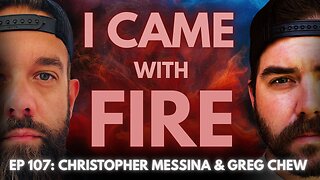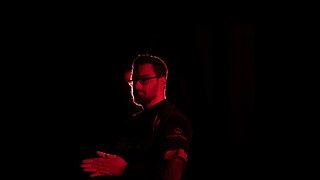Premium Only Content

Karate | Okinawan Goju-ryu | Seiunchin kata
In this sample clip, the choreography of the kata is shown with a certain speed and rhythm intended for group training as practiced within the school of Martial Mindfulness.
Except for the embusen (format/pattern) of a specific kata, the rhythm, speed, details and even execution of techniques can differ per individual according to his or her interpretation and imagination of the bunkai (combat application) and personal abilities and preferences while performing.
Within the Martial Mindfulness school, both hard and fast, soft and slow and/or combined movements are part of the kata practice. From reactive and concentrated actions, arising from our fighting spirit (resulting in a more closed tunnel vision), we try to open up again through slow movements and silence (pause/stop). Practicing slowing down and pausing (no movement) are an essential part of the exercise. Depending on your goals, you can pay more or less attention to one or the other.
The name Seiunchin or Seenchin/Seienchin means "to remove while marching calmly" and "to control, pull, and suppress."
The kata cannot be traced be traced but probably originated in China.
In Seiunchin, the shiko dachi is employed particularly often. This stance strengthens the leg muscles and is very suitable to direct the force during throwing techniques upwardly and to remain stable while experiencing resistance. This kata also employs unique techniques in which one arm/hand supports another.
Performer Lex Opdam
Origins of the shown form: Okinawa Goju-ryu karate
Lineage of the performer: Okinawan Goju-ryu karate (IOGKF-Meibukan-MMF)
Video was taken in Nijmegen, Netherlands, june 2021.
_
While these short video examples are freely accessible, they are intended for Martial Mindfulness practitioners. The context of the content is covered during the lessons and the examples shown are meant to support training.
_
-
 21:09
21:09
Michael Franzese
3 hours agoCNN’s Cartel Interview EXPOSED What’s Really Going On
40.1K20 -
 LIVE
LIVE
Sarah Westall
40 minutes agoWho Really Runs Hollywood? Crime & Soulless Messaging w/ Counterculture Mom Tina Griffin
66 watching -
 LIVE
LIVE
Edge of Wonder
3 hours agoFirst UFO Crash in 1897: Alien Beings Buried at Crash Site
262 watching -
 LIVE
LIVE
I_Came_With_Fire_Podcast
2 hours agoThey Just Built the Amazon of Crypto And It’s Fully Decentralized
57 watching -

LFA TV
8 hours agoPeace Derangement Syndrome | TRUMPET DAILY 5.20.25 7PM
6.53K -
 1:21:56
1:21:56
Dr. Drew
6 hours ago14 Years & 19 Meds: Why Laura Delano Stopped Years Of Psychiatric Drugs & Went "Unshrunk" + Paleovalley's Autumn Smith – Ask Dr. Drew
39.1K6 -
 LIVE
LIVE
LumpyPotatoX2
4 hours agoCyberPunk 2077 Gameplay + 1775 Coffee Partner - #RumbleGaming
101 watching -
 1:42:15
1:42:15
John Fredericks Media Network
9 hours agoJohn Fredericks Show 5/20/2025
47 -
 11:53
11:53
China Uncensored
3 hours agoI Knew China’s Military Was Overrated. India Just Proved It.
18.5K13 -
 LIVE
LIVE
Spartan (Pro Halo esports Player)
2 hours agoRanked then SWTOR
133 watching